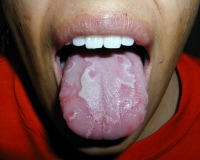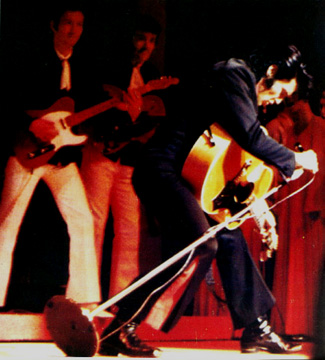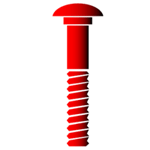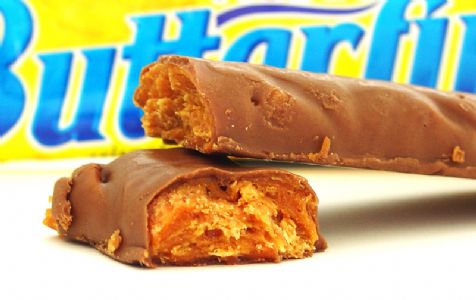Last month I was pretty stressed out, more than I realized. I went to the dentist for a regular check-up and when they do the thing where you have to stick out your tongue so they can pick it up and move it around, the dentist said, startled, "Oh! You have a geographic tongue!"
I had never heard of such a thing, let alone that I had one. She said it's no big deal, some people have it and some people don't. It doesn't mean anything except that sometimes it's more apparent when you're stressed out but it's really nothing to worry about.
The phrase was so intriguing, of course I had to look it up. It's a pretty simple topic, actually, and I was going to let this one go by, but I've been sort of fascinated by the whole idea since I learned about it. Every so often I check on my tongue, to see what's the latest geography.
- A geographic tongue is one on which the papillae fall off in patches.

The places where the tongue looks burned are places where the papillae have fallen off. This is a typical amount of patchiness on my tongue on any given day.
(Photo from World Articles in Ear, Nose, and Throat. Unless you like being completely grossed out, you do not want to look at the other photos on that page.)
- The tongue is covered with four types of papillae, or tiny protrusions. Three of the four types of papillae hold taste buds. The fourth kind that we're concerned with, called filiform papillae, do not have taste buds. So the fact that these things fall off does not mean that your sense of taste is compromised.
- Filiform papillae do have a function, though. They are abrasive and give the tongue a rasping and cleaning capability. These same things are on cats' tongues but much more prominently so. They are what makes cats' tongues so effective at cleaning their fur.
Filiform papillae have spiky tips that are actually coated in a fine layer of keratin, which is what makes them rough. On cats, these papillae are longer and they stand up, where on humans, the filiform papillae are shorter and lie flatter on the tongue.
(Photo from Southern Illinois University's School of Medicine)
- The papillae replace themselves about every week, but often more will fall off in another location, so it will appear that the bald patches move around.
- They also regenerate themselves on the outer edges of the patches first, so it might look like there is a white or sometimes bright red bumpy line around the outer edges of each patch.

Here the faint white lines at the edges of the patches are visible.
(Photo from DermNet NZ)
- The official medical phrase for "geographic tongue" is "benign migratory glossitis." That name is actually a better description of what's going on.
- Benign = not harmful, no worries.
- Migratory = it moves around.
- Glossitis = swelling. The red patches are actually places where the tissue of the tongue has swollen, and that's what causes the papillae to fall off.
- About 3% of the population have a geographic tongue. It seems to be a genetic condition.
- Within that 3%, it is almost twice as common among women than men.
- Many people who suffer from psoriasis also have a geographic tongue. But a lot of the people who have a geographic tongue do not have psoriasis.
- People with eczema, asthma, or allergies -- some extra sensitivity to their environment in other words -- also seem to be more likely to have a geographic tongue.
- It's also fairly common among people who have diabetes.
- But just because you have a geographic tongue does not mean you should worry that you have any of these other conditions. It might be linked to those conditions, but chances are it isn't.
- Women who take birth control may notice that it's more pronounced on day 17 of their cycle, a fact which leads doctors to surmise that it has something to do with hormones.
- Other people think that deficiencies in the B vitamins might be a contributing factor but that, too, is currently only a theory.
- The fact that it does seem to get more patchy when people are stressed out and immune levels are low seems to bolster the B-deficiency theory.

When there are more patches or when they show up more obviously as they do on this woman's tongue, I'm pretty sure that's when I'm more stressed out.
(Photo from eMedicine)
- Oddly, the condition is less common in people who smoke.
- Some people think that hot or spicy or acidic foods might make the patches appear.
- Or maybe drinking too much alcohol makes the tongue get patchy.
- As the multitude of conjectures suggests, doctors don't really know what causes it or why it happens. It doesn't seem to affect anything, so there's really no reason for anybody to look for a treatment, so there isn't one.
- Some people do say they experience a burning sensation where the patches appear, but most people with this condition don't sense any change.
- If you do experience discomfort, try rinsing with an antiseptic mouthwash. That's supposed to help cool the burn.
NOTE TO COMMENTERS: I very much appreciate your comments and your interest in this topic. But I am not a doctor. I can't tell you whether what you have is a geographic tongue or not. If your tongue hurts for some reason, I can't tell you why that is or what exactly will work for you. All I can do is tell you about my own tongue and what I've found generally on the subject.
If you still have questions, re-read this entry, or do some more reading elsewhere about the topic. You were enterprising enough to find this page, surely you can find more information if you try (you could start with the sources listed below). Or better still, take what you've learned to your local friendly doctor and ask him or her for a diagnosis and advice. Happy exploring!
Sources
International Geographic Tongue Support Group
Medline Plus, Geographic tongue
Robert D. Kelsh, DMD, Geographic Tongue, Medscape's eMedicine, October 6, 2009
Dr. Greene, Geographic Tongue
Maxillofacial Center for Education and Research, Migratory Glossitis (Geographic Tongue)
DermNet NZ, Geographic tongue (benign migratory glossitis)
WrongDiagnosis.com, Geographic Tongue and Filiform Papillae
Inner Body, Filiform Papillae


































